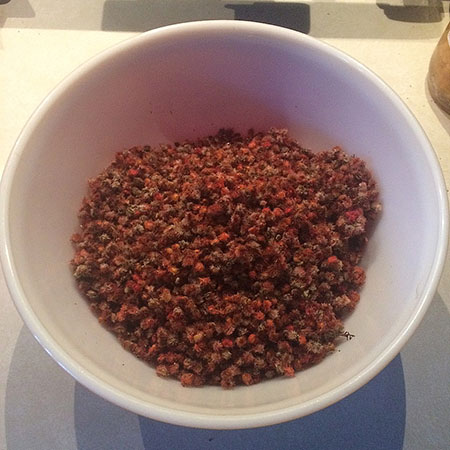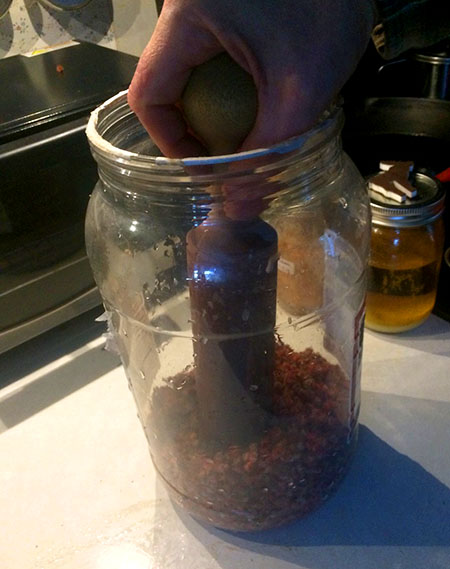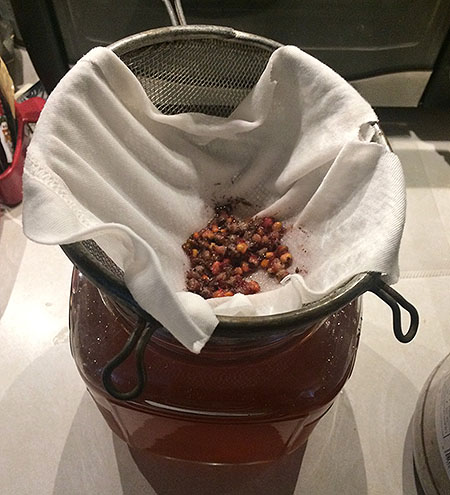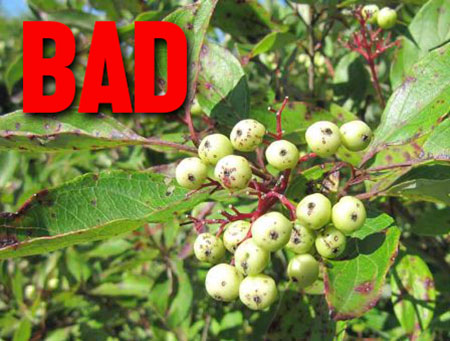
Cold and flu season is a good time to remember that In a post-SHTF world, you will need more than just food and water. You will need vitamins to stay healthy. Vitamin C is important for a strong immune system.
A shortage of Vitamin C weakens your resistance to colds and flu. Prolonged deficiency in Vitamin C results in Scurvy.
Think Beyond Calories
Rice and beans are good for calories and protein but your body will need many vitamins too. Vitamin C is crucial but not stored in the body. You need to regularly take it in. Vitamin C is fairly common in green leafy plants and fruits so it is not too hard to get your daily requirements during summer.
Greens and fruits are notoriously absent in the middle of winter. You can (and should) stockpile some vitamins along with your food storage. The question will be, what do you do when your vitamin bottles are empty?
I’d written earlier about sauerkraut as the British Navy’s answer to scurvy during long sea voyages. Sauerkraut (fermented cabbage) has Vitamin C and a good shelf life. For a prepper, sauerkraut is a grow-your-own Vitamin C source. But what, you might ask, is a post-SHTF person to do if they did not grow and harvest cabbage in the fall to make sauerkraut?
Wild C
There are wild-edible sources of Vitamin C you can access in the winter. One of them is Sumac Tea. The Native Americans used Sumac Tea to treat colds. The taste is similar to a mild pink lemonade.
Staghorn Sumac grows primarily in the eastern US and Great Lakes area but can be found a bit outside that range too. A close variant is Smooth Sumac still grows berries in a cone. They’re just smooth. Smooth Sumac is found farther into the midwest and south.

It is a pretty distinctive small tree with its red upright cones of fuzzy berries. Those fuzzy berries can be steeped to make a reddish tea containing Vitamin C. Sumac Tea is actually not hard to make. I made a batch this weekend.
Sumac Tea is not a new thing. Heck, the Native Americans used it. There are other articles around the interwebs that talk about making it. Many say that you get the best flavor if you harvest the seed cones in the fall. While best for flavor, that might not be when you find yourself in the SHTF situation. You would be harvesting sumac when you needed it, despite past-peak favor. You need some Vitamin C…like mid-January, for instance.
Self-Storing Resource
Staghorn Sumac trees retain their red seed cones throughout the winter. While some birds will peck at them, they generally get left alone. This will help you post-SHTF as your Vitamin C will be waiting for you out on the branch tips.
Fuzzy Berries

My trees are Staghorn Sumac. The seed cones are pretty easy to break off, or with a simple knife cut after breaking the stem. You might see some scruffy gray cones among the branches. Those are last year’s cones. You don’t want those. Select the cones with the brightest color and the least damage. I gathered fourteen seed heads in just a few minutes.
While some bloggers or YouTubers describe simply placing the whole cone in a jar and covering it with water and waiting a couple hours, this is usually the autumn harvest cones. The flavor (and vitamins) in winter cones will need a bit more help.
Strip and Crush

Once back in the house, I stripped off the berries from the cone, not trying to get every seed but stopping when they did not dislodge easily. I could maybe have worked at it longer, but I was trying to avoid adding the twigs/stems. (More on that below.)
After stripping the fourteen cones, I had a bit over three cups of berries. These, I placed in a gallon jar and crushed with a wooden pestle. I was not aiming to create pulp, just break the berries up a bit. I then added ten cups of cold water.
Cold Process
Some writers talk of boiling their seed heads to make the tea. While that is faster, others say the hot method reduces the Vitamin C content and tends to bring out the tannin in the stems. So, I let my jar of berries and cold water sit overnight, shaking to stir occasionally.
Strain and Go

The berries float, so the next morning, I kept most of them in the jar with a fork while I poured. I tried a coffee filter, but it was too slow. A square of old T-shirt material worked much better. It was fine enough to strain out the little berry hairs and bits. The resulting ‘tea’ was clean but not as red as it can be in the fall. This batch was more of a reddish-brown.
How Does It Taste?
The taste of winter Sumac Tea is milder than an autumn brew but it is still similar to lemonade. While you can add sugar (or honey, or maple syrup) to sweeten it, I found that it took more sweetener than I wanted to invest in it to make it taste sweeter. A little bit of maple sugar did seem to mellow the tartness but it was hardly a sweet lemonade. I just drink it without sweeteners. It’s not knock-your-socks-off tart.
Obligatory Caveat

Only you are responsible for what you put in your mouth. Know your wild plants. Staghorn Sumac is pretty obvious, but it’s your mouth. Be sure. FWIW, the poisonous plant, Poison Sumac, is quite different. Even though the leaf structure looks similar, it has irregular clusters of smooth white berries. Never eat those. Know the difference. What you want are red, in a cone (fuzzy or smooth).
Think Outside the Cache
While stockpiling vitamins is a good idea, and fairly inexpensive for now, there could come a time when you’ve taken your last Flintstones Chewable. What then? There are natural sources of Vitamin C out there. Once you’ve located them and practiced a bit, you’ll have a backup to your cache.
If you have Sumac trees available, go for it. It costs nothing to try. All you need is a gallon jug, cold water, and a square of T-shirt material.
—

Thanks for putting out good information with the right pictures. ASG magazine has put out bad info twice.